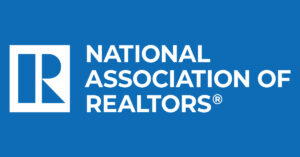There are several mortgage-related programs and products that borrowers have access to when starting the process of comparing homes for purchase. These financing options will continue to increase as lenders seek new ways to do more business with a growing homebuyer demographic.
Because the mortgage process can be daunting — and a large investment for buyers — it’s critical that mortgage originators present themselves as coaches and advisers rather than just transactional middle-men. One area in which clients of all ages — but especially younger, first-time homebuyers — have a significant lack of awareness is the options they have at their disposal when it comes to putting money down, including downpayment-assistance programs.
One of the biggest battles that mortgage originators face is a general lack of client knowledge about this topic, which often stems from misconceptions and inaccurate viewpoints about downpayments. For many years, potential buyers have been under the impression that a 20% downpayment is required to purchase a home.
This, of course, is a myth — an unfortunate one that is often passed down from the baby-boomer generation to the current crop of new (and soon-to-be) homebuyers. You can purchase a home with as little as 3% down for conventional loans through Fannie Mae or Freddie Mac, as little as 3.5% down for Federal Housing Administration loans, or even zero-down mortgages from the U.S. Department of Veterans Affairs (VA) and U.S. Department of Agriculture (USDA).
Inexpensive options
The lack of borrower awareness often extends beyond the downpayment myth and into the availability of low-downpayment options. This is particularly true in regard to VA and USDA loans.
A large number of current military members and veterans are unaware that they can qualify for a VA home loan. VA loans allow for zero down, include no monthly mortgage insurance premiums and typically come with a lower interest rate than conventional loans. Likewise, a USDA home loan also requires zero down for eligible rural and suburban homebuyers, giving clients within certain household income limits access to lower monthly mortgage insurance payments and interest rates.
In addition to VA and USDA loans, there also are several downpayment-assistance programs available to homebuyers through city, county and state government entities, as well as a handful of nonprofit organizations. These programs are often designed for borrowers who may need assistance by providing grants and/or second-lien loans, which may be interest free and include deferred payments. These programs, however, often have strict underwriting guidelines to ensure the borrower is not going beyond their means. These may include firm maximum-income limits.
Hidden strings
These home loan programs can represent the perfect option in the right situation, but they also can have hidden strings attached. For instance, some niche downpayment-assistance programs come with higher interest rates compared to conventional loan programs. Others require the homeowner to live in the house for a certain number of years, and if they sell the home or turn it into a rental property before that time period has lapsed, they are required to pay back a prorated portion of the loan proceeds.
There are other instances when a zero-down mortgage is more of a marketing gimmick by a lender than a tangible product created with the home-buyer’s best interest in mind. This is because the borrower is still required to pay some funds for a downpayment, even though they are labeled as a zero-down mortgage. A homebuyer may qualify for $15,000 in downpayment assistance, for example, but the loan program may still require the buyer to put down 1% or more, while the lender tacks on additional fees that eat up a portion of the proceeds.
There are many stipulations that some lenders choose to install on the back end of these loans. In addition, there may be more associated fees and the time frame to close these loans is sometimes longer than with a standard mortgage contract. On top of that, borrowers run the risk of potentially scaring off a seller because the downpayment assistance has to be disclosed, making the deal look less appealing.
It’s critical for mortgage originators to go over each of these assistance options, as well as the fine-print stipulations, with their clients to ensure these programs are right for them. But originators also should think above and beyond the typical “transactional” relationship they have with clients. They should not only review which loans can be selected, they should take it to the next level by figuring out why a particular program is the best fit. This is a key area of consideration that some originators might overlook, but it is one that independent mortgage brokers should utilize to add value to their client interactions.
Ask questions
It’s important for mortgage originators to get a full grasp of their clients’ needs by discovering what their goals are. It goes without saying that their main goal is to buy a home, but there’s more to it than that.
Find out how long they want to live in the home. Ask if there is anything meaningful about the neighborhood or the home itself, or whether they have young kids and want to live in a particular school district. Are they wanting to buy a starter home and eventually transition into more of a long-term home, or do they want to go straight into their “forever” home? Look to truly find out what they hope to do with the home in the next five to seven years, and then use that information to find the best loan product for them.
Ultimately, there is more to a mortgage originator’s job than their title indicates. It’s not just about brokering deals between borrowers and lenders. It’s about being a coach and adviser who clients can rely on to gain a complete, trustworthy understanding of the homebuying process. The responsibility is on originators to educate borrowers and not only help them make the best choice, but the right choice when it comes to getting a mortgage.
Author
-
Joseph Dionne is the assistant vice president of operations at Home1st Lending LLC. As an experienced loan officer, he has the required financial knowledge and expertise to stay up to date on changing market conditions and mortgage programs. Dionne is a reliable and committed mortgage professional who puts his clients’ goals first and foremost.




